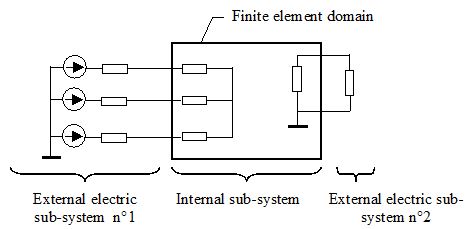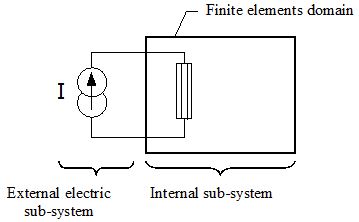Since version 2026, Flux 3D and Flux PEEC are no longer available.
Please use SimLab to create a new 3D project or to import an existing Flux 3D project.
Please use SimLab to create a new PEEC project (not possible to import an existing Flux PEEC project).
/!\ Documentation updates are in progress – some mentions of 3D may still appear.
Electrical sub-systems and circuit coupling
Introduction
In order to correctly understand the difference between an internal sub-system and an external electrical sub-system, several reminders on the electrical coupling in Flux are presented in this paragraph. For more details, see chapter “Kinematic coupling: principles”.
Circuit coupling: reminders
The conductors related to the circuit coupling are of two types:
- solid conductors: bar-shaped conductors, plate-shaped conductors, etc. These can be the site of the localization of important eddy currents.
- stranded conductors: fine wire coils
These conductors are represented twice:
- once in the electric circuit, as:
- components of the stranded conductor type
- components of the solid conductor type
- once in the finite element domain, as:
- regions of the stranded conductor type (or non meshed coils in 3D)
- regions of the solid conductor type
Electric sub-system: definition
The “external part” of an electric circuit, i.e. the assembly of electric components other than the components coupled with the FE* domain, is called the external electric sub-system.
The number of external electric sub-systems is equal to the number of independent electric circuits.

Particular case
It is important to analyze the following particular case:
- There is no circuit coupling (in the usual sense of the term)
- There are stranded conductors supplied by current sources
The supplying of the stranded conductor is seen as an electrical sub-system.
